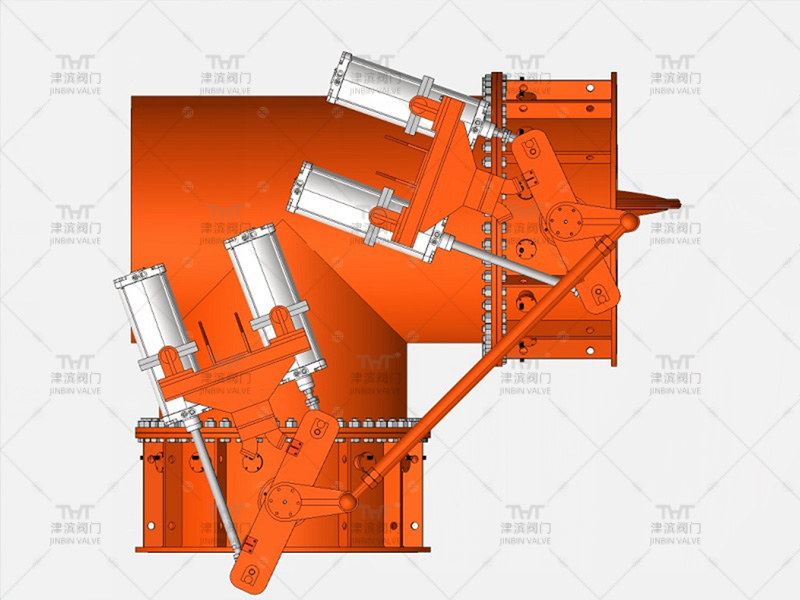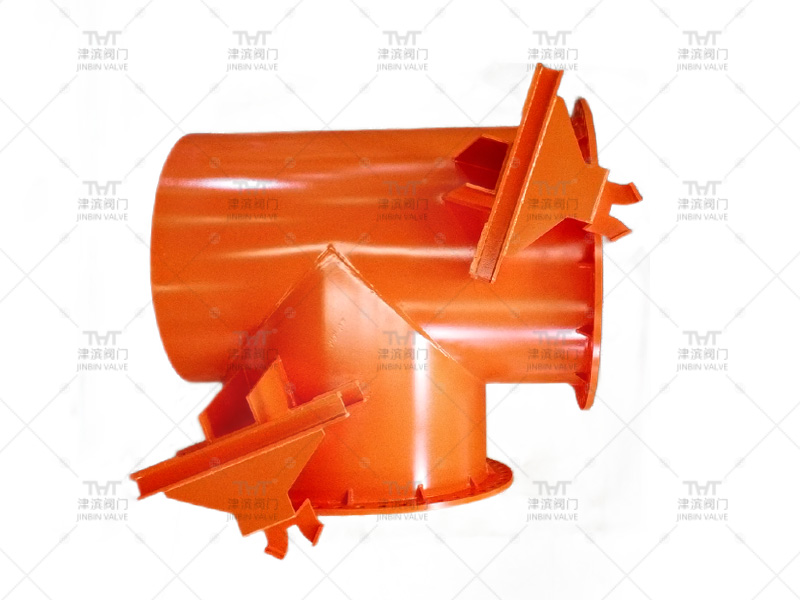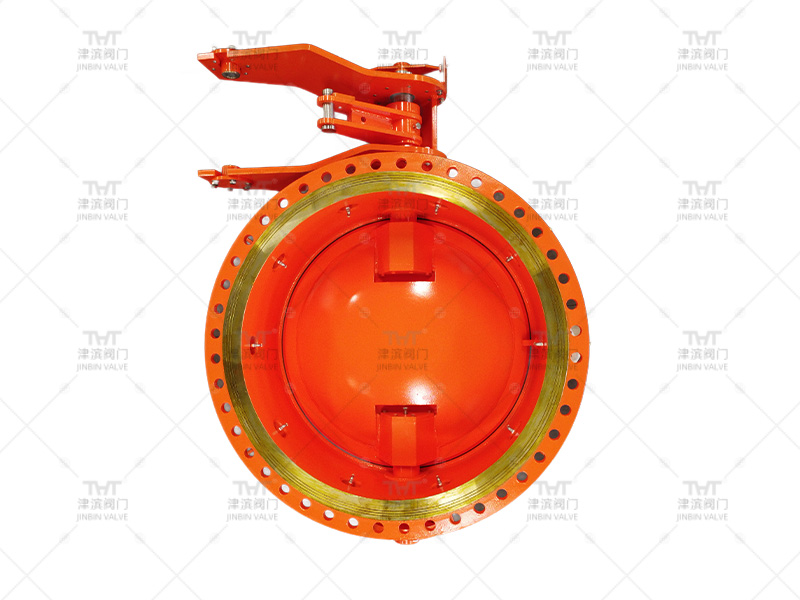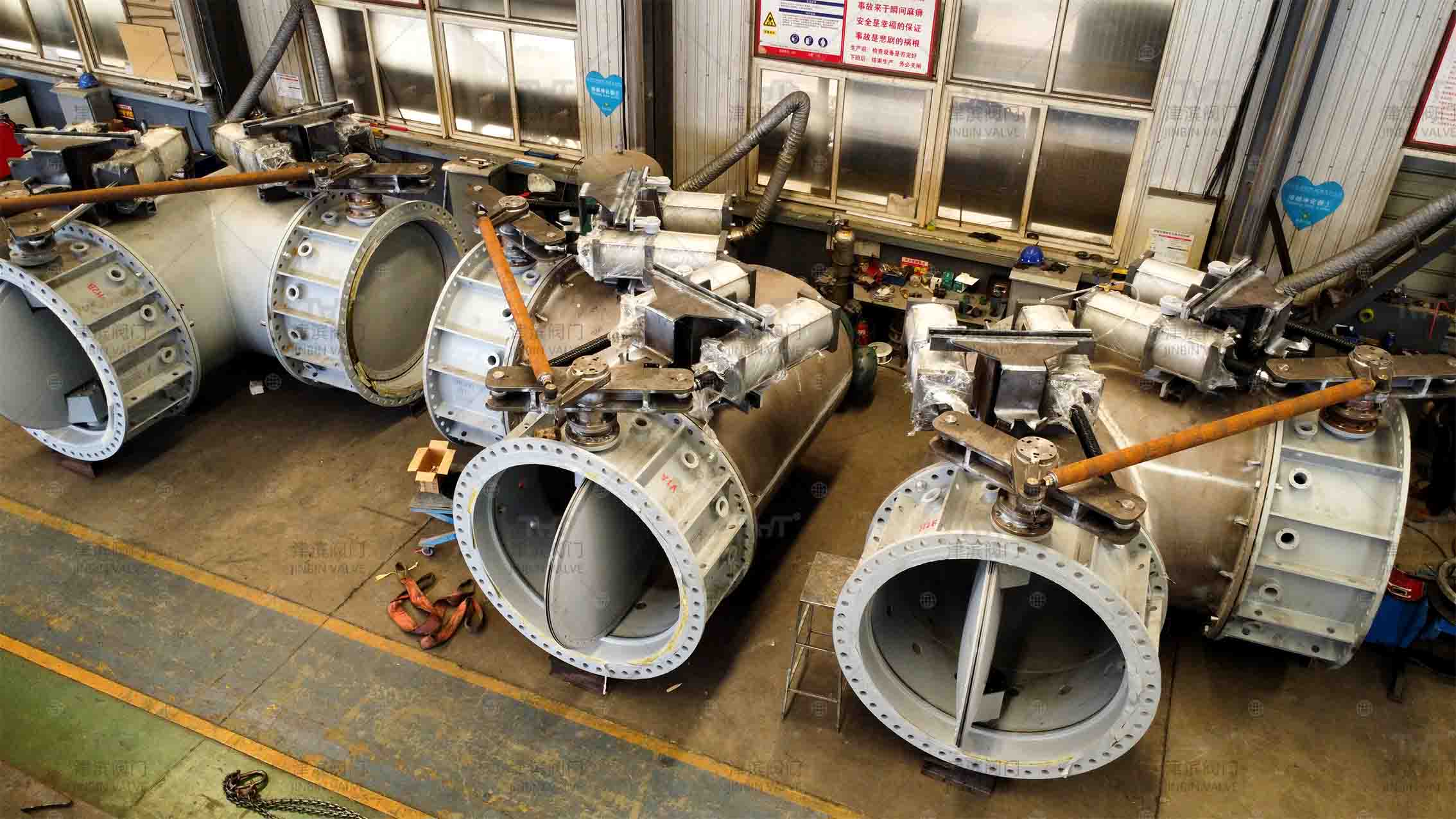In high-temperature industrial sectors such as steel, glass, and ceramics, regenerative furnaces achieve energy conservation and emission reduction through flue gas waste heat recovery technology. The three-way air damper / flue gas damper ventilation butterfly valve, as the core component of the furnace reversing system, undertakes the critical task of switching the flow direction of flue gas and air (or fuel). With its characteristics of high-efficiency reversing, precise control, and resistance to harsh environments, it has become an important guarantee for modern industrial furnaces to improve energy efficiency and reduce pollution.
Working Principle: Three-Way Structure for Bidirectional Switching
The three bypass damper valve ventilation butterfly valve adopts a ‘Y’-shaped three-way structure with two inlets (A, B) and one outlet (C), or two outlets (B, C) and one inlet (A), achieving rapid fluid channel switching through a rotating valve plate. Its core principles are:
1. Forward Conduction: The valve plate rotates to a specific angle, connecting inlet A to outlet C while closing inlet B.
2. Reverse Reversing: The valve plate rotates 180°, connecting inlet B to outlet C while closing inlet A.
In regenerative furnaces, these valves are typically used in pairs to control the reversing of flue gas exhaust and combustion air/fuel input. Combined with regenerators, they enable bidirectional waste heat recovery from flue gas, increasing furnace thermal efficiency by over 30%.
High temperature butterfly valve damper core advantages: High Efficiency, Stability, and Intelligence
1.Millisecond-Level Rapid Reversing for Continuous Furnace Operation
The valve plate uses lightweight materials (e.g., aluminum alloy, carbon fiber-reinforced composites) and is paired with pneumatic or electric actuators, reducing reversing time to less than 500 milliseconds. This eliminates the “flow interruption gap” of traditional gate valves, ensuring stable furnace temperature and minimizing process fluctuations caused by reversing.
2.Dual Sealing Structure to Resist High-Temperature Corrosive Media
The valve employs a metal hard seal + elastic soft seal design:
- Valve plate and body contact surface: Surfaced with high-temperature alloys (e.g., Inconel, Hastelloy) or ceramic coatings to withstand flue gas scouring at over 1200°C.
- Sealing rings: Made of silicone rubber, fluororubber, or graphite composites, maintaining elasticity at high temperatures for zero leakage.
Ideal for corrosive flue gas environments containing dust and sulfur oxides.
3.Low Flow Resistance for Energy Savings
The disc-shaped valve plate sits nearly parallel to the fluid direction when fully open, with a flow resistance coefficient only 1/3 to 1/5 that of gate valves, significantly reducing fan energy consumption. The energy-saving effect is particularly notable for large-flow conditions (e.g., over 100,000 m³/h).
4.Intelligent Control for Complex Conditions
The valve integrates position sensors, pressure transmitters, and PLC/DCS systems to enable:
①Customizable reversing logic: Adjusting reversing cycles in real time based on furnace temperature and pressure.
②Fault early warning: Detecting anomalies like valve plate jamming or seal failure and automatically switching to backup mode.
③Remote maintenance: Monitoring valve status via IoT platforms to reduce manual inspection costs.
Three way butterfly valve application Scenarios: Versatile Reversing Solutions for Industrial Furnaces
1. Steel Industry: Heating Furnaces and Heat Treatment Furnaces
In steel rolling reheating furnaces, three-way butterfly valves switch flue gas and air to transfer high-temperature flue gas heat to regenerators. The reheated air then carries heat into the furnace, achieving double regenerative combustion and reducing fuel consumption by 20%–40%.
2. Glass/Ceramic Furnaces: Efficient Melting and Energy Conservation
In glass furnace regenerator reversing systems, the valves rapidly switch gas and air flow directions, reducing NOx emissions while improving glass melt efficiency. In ceramic roller kilns, valves control hot air circulation direction to homogenize furnace temperature and enhance product yield.
3. Chemical and Building Materials: Complex Media Handling
For chemical tail gas systems with tar and dust, the valve’s wear-resistant coatings and self-cleaning structures prevent blockages. In cement kiln waste heat power generation systems, valves switch high-temperature flue gas and cooling air to optimize waste heat recovery.
4. Environmental Protection Equipment: RTO Regenerative Thermal Oxidizers
In RTO devices for volatile organic compound (VOCs) treatment, three-way butterfly valves control exhaust and purified gas reversing, ensuring full heat utilization of regenerators while withstanding instantaneous high temperatures during incineration.
Post time: Mar-26-2025




